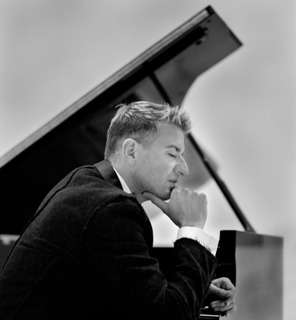|
Back
Twentieth Century Paradigm New York
Isaac Stern Auditorium, Carngegie Hall
02/22/2013 -
Gabriela Lena Frank: Concertino Cusqueno (NY Premiere)
Maurice Ravel: Piano Concerto in G Major
Igor Stravinsky: The Rite of Spring
Jean-Yves Thibaudet (Pianist)
The Philadelphia Orchestra, Yannick Nézet-Séguin (Music Director)

Y. Nézet-Séguin (© Marco Borggreve)
After last night’s expansive reading of Stravinsky’s Rite of Spring, it occurred, in the centennial year of the ballet, that this music–more than Guernica, more than Ulysses or Freud or Proust–was the paradigm of the 20th Century.
Even before the Great War, Stravinsky embodied t savagery of nations, the primordial “skull beneath the skin”, the dissolution of religion, the bestial underpinnings of seduction, the unconscious Neanderthal Man beneath “modern” man, and he knew that Spring, the season of birth, was inevitably inexorably, the cruel cruel inevitable season of death.
As well as music which has never been equaled, much less bettered in his 100 years of existence. And if the composer thought his later works music was purer or more devotional or superior...well...no...Nothing approaches the Sacre.
It is a conductor’s dream piece as well. And the Philadelphia Orchestra’s Music Director, Yannick Nézet-Séguin took every advantage of his youth, energy, enthusiasm, and the tip-top playing of his orchestra to bring it to fruition. Mr. Nézet-Séguin was never afraid to broaden out those sensual section of the “Spring Rounds” to an almost agonizing crescendo. The “Tribal Fight” was a pulverizing battle. And when it came to the kettledrum pounding in the second half, the Maestro made sure that the original fortissimo sforzando was quadrupled in sound.
Just as it should be. What he understood was that Sacre is not sound and fury but its so sensual moments need time to draw us in–if only to be destroyed in the fiery rituals.
No living composer should share a program with this work, but Gabriela Lena Frank, who had written her Concertino Cusqueno for the orchestra, started the evening with a pleasant guessing game. Ms. Frank is eclectic in two ways. First, her background is (take a deep breath) Lithuanian, Peruvian, Jewish, American and Chinese. Second, she has no hesitation in quoting from composers she likes, to celebrate the wonderful Peruvian town of Cuzco. (Personal note: Stay out of Lima, always stay in this fantastic Quechua capital.)
Thus, she started with an Inca flute tune, continued with bars from Benjamin Britten’s Violin Concerto and turned the 12-minute work into an almanac of other sounds. One repeated motif could have come from Beethoven’s Fifth, but it was probably from Milhaud’s Boeuf sur le Toit. Other birdcalls amidst the orchestra sounded like Villa-Lobos. The string section were vaguely 18th Century. But underneath it all were the relentless South American rhythms which gave it constant impetus.
The piece was neither “heavy” nor “profound” but the music was well-constructed and invariably charming.

J.-Y. Thibaudet (© Kasskara/Decca)
In the middle of the program, Jean-Yves Thibaudet played a work he has probably played hundreds of times before, but as a sophisticated Frenchman with a delicious penchant for the piano, the Ravel Piano Concerto was virtually made for him. Despite a paltry snap at the beginning, and some less than really jazzy moments in the finale, Mr. Thibaudet understood the droll moments and played that lyrical second movement with a moving, darkly reflective aura.
Harry Rolnick
|